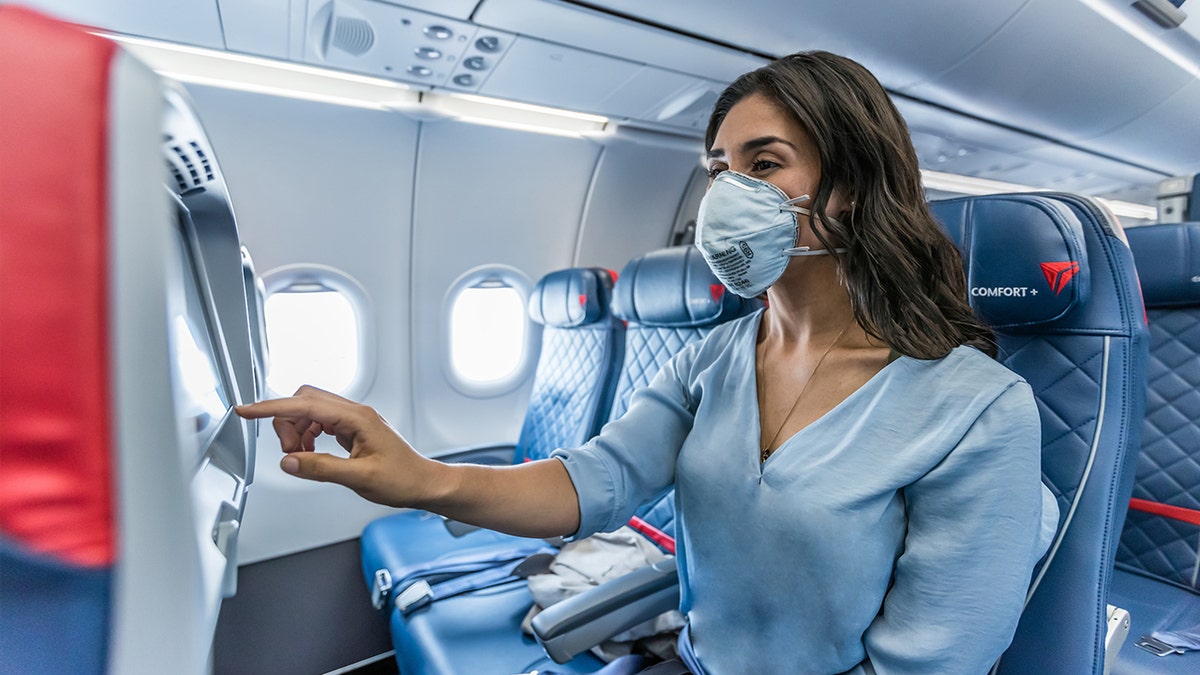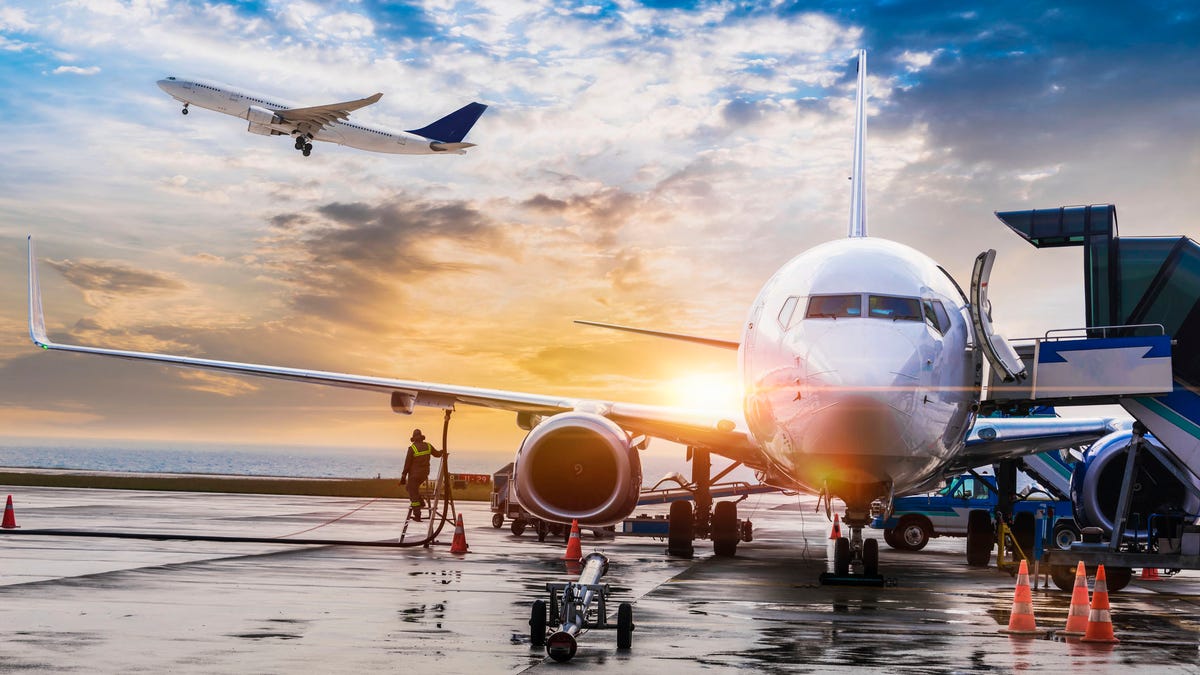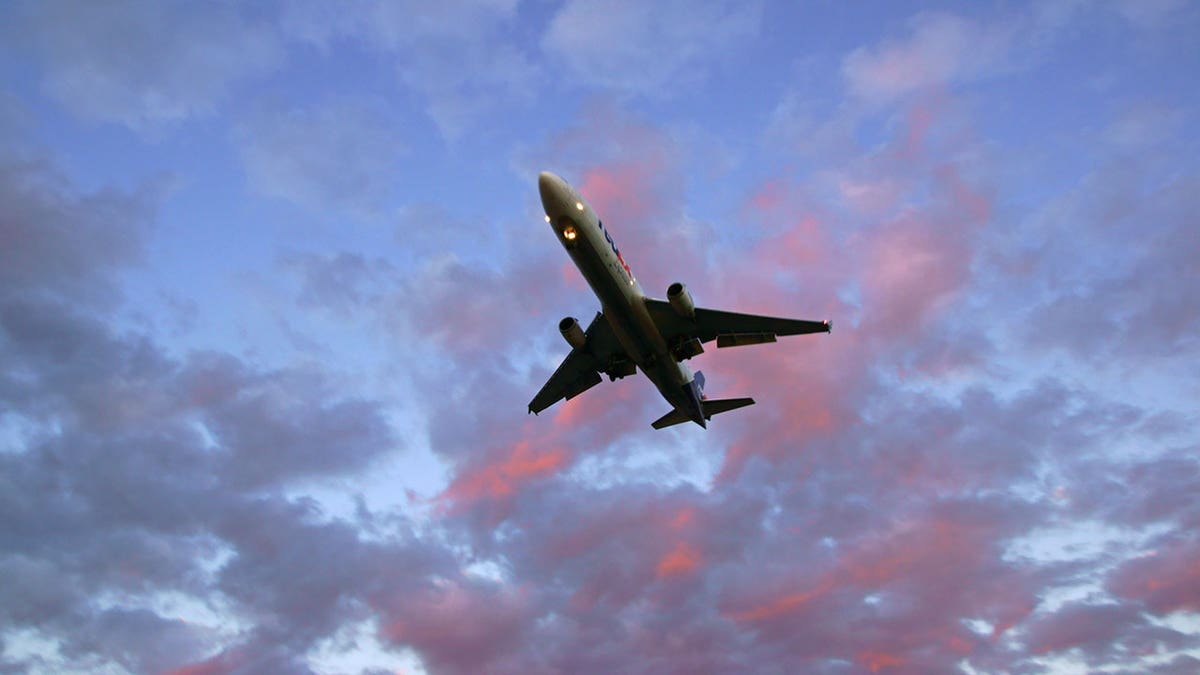Airline staff shortage pushing pilots to legal limit of hours, sparking calls to raise employee retirement age
Aerospace journalist and former pilot Kathleen Bangs discusses the shortage of approximately 9,300 pilots and measures airlines can take to combat the crisis.
Dr. Andrea Merrill, a surgical oncologist in Boston, is raising awareness about the need for better airline emergency medical kits after a tweet of hers went viral recently.
She helped out on an in-flight emergency this summer — and learned a great deal.
Now, she's speaking out and hoping others step up to provide better equipment on board flights. Already, there has been response.
"Dear @Delta, I just assisted in a medical emergency in the air," tweeted Merrill, assistant professor of surgery at the Boston University School of Medicine and a surgical oncologist at Boston Medical Center.
"Your medical kits need a glucometer, epi pen, and automatic blood pressure cuffs — it’s impossible to hear with a disposable stethoscope in the air," the 38-year-old added.
"Please improve this for passenger safety!" she also wrote.
While on board a flight this summer to Portugal, the doctor ran up along with two other physicians after hearing there was an emergency on the airplane — and that medical professionals were needed to help.
She had never been in a medical emergency on board a flight prior to this experience in June, she told Medscape — so when others handed her and the two other doctors the emergency medical kit, or "EMK," Merrill was not sure what to expect inside the kit.
Even taking someone's blood pressure was a struggle, she said afterward — because the doctors had to do so "manually."
(Below, Dr. Merrill shares a follow-up tweet about the situation.)
First, the doctors had to assemble the blood pressure cuff, which was in three pieces and covered in plastic, Medscape reported.
Then they had to use a disposable stethoscope to complete the blood pressure check.
"I know most people out there probably don't use these disposable stethoscopes," she said in an interview with Medscape. "You can barely hear anything in an office, and there's no chance that you can hear anything on an airplane."
The passenger with the medical issue turned out to be OK.

One physician found a glaring lack of appropriate medical equipment on board a flight recently. Now, at least one airline is answering the call for improvement. (iStock)
Yet the doctor also noticed there was no pulse oximeter in the kit, which measures the percentage of oxygen in a patient’s blood and is used in routine vital sign checks.
There was also no glucometer, which measures the blood sugar level, nor was there an EpiPen, a medication that is often administered for life-threatening allergies.
"Had we really needed to do something emergently, I felt like we would have been unprepared," she revealed to Medscape.
"A medical emergency in flight can be an intense experience for everyone involved."
"There was a kit that had medications in it, but it wasn’t offered, and I didn’t know to ask," she told Fox Digital News in a phone interview.
Delta Air Lines not only reached out to the physician after this emergency, with specific details — it also told Fox News Digital that it is working to improve patient safety in the sky.
"A medical emergency in flight can be an intense experience for everyone involved," a Delta spokesperson told Fox Digital News.

The airline said that it is working to add "medical-grade diagnostic tools to our onboard medical kits this summer."
"That’s why Delta’s Wellbeing team is making it easier for our flight attendants, onboard medical volunteers, and partners at STAT MD to quickly assess a situation and determine next steps."
The airline added it is working to add "medical-grade diagnostic tools to our onboard medical kits this summer, including automated blood pressure cuffs, medical-grade stethoscopes and pulse oximeters."
The airline noted it also expects these kits to evolve as medical technologies advance.
What medical supplies do airlines actually carry?
Four main categories of supplies are required on airplanes, Dr. Amy F. Ho, a Texas native, told Medscape.
She’s an emergency medicine physician who has responded to several medical emergencies and received in-flight training while in residency.
"There's an automated external defibrillator (AED), an oxygen tank, a first aid kit (which is a really basic kit), and then there's something called an EMK, which is the emergency medical kit," Ho said.
"The FAA requires many items to be carried in emergency medical kits, including epinephrine."
"That is a sealed kit. It's only supposed to be given to people who are qualified for it, which is why you end up having to ask for it."
FAA requirements for medical supplies
"The FAA [Federal Aviation Administration] requires many items to be carried in emergency medical kits, including epinephrine," the FAA told Fox Digital News in an email.
The organization said the specific items can be found in the FAA regulations and in the 2006 Advisory Circular.

An airplane readies for flight. The advanced medical kit on board most flights requires some basic equipment for protect adults and children. (iStock)
The FAA rules, however, only applies to certain flights — "but they will apply to most of our standard commercial flights," Ho also told Medscape.
The advanced kit requires some basic equipment to protect adults and children, basic intravenous equipment, a blood pressure monitor, a stethoscope, some cardiac drugs (like epinephrine], atropine, lidocaine, nitro[glycerine], and aspirin), bronchodilators, antihistamines and certain pain medicines, Ho added.
Many airlines add more items — so there is some variation depending on the airline.
She noted the kit does not include a pulse oximeter or a glucometer "because the airlines will sometimes crowd-source those from other passengers."
Many airlines add more items — so there is some variation depending on the airline, Ho said. But the kit has not been formally updated by the FAA in over 16 years, according to the Electronic Code of Federal Regulations.
CHECK YOUR MEDICINE CABINET! HOW TO FIND RECALLED DRUGS
"The FAA last issued a circular on this in 2006 and formally updated the kit in 2004," said food allergy advocate Lianne Mandelbaum, founder of No Nut Traveler and an airline correspondent for Allergic Living magazine.
"These medication kits, at a minimum, should have an easy-to-use autoinjector [containing epinephrine]," she added.
Epinephrine vials vs. epinephrine auto-injector
A common epinephrine auto-injector is the EpiPen and EpiPen Jr (for children), which are indicated for treating life-threatening allergic reactions, according to its prescribing information.
But the FAA requires airlines to only equip their planes with epinephrine vials that are administered with syringes.

Airlines do also partner with medical facilities on the ground. (iStock)
So airlines are not required to have epinephrine auto-injectors "because the airlines have been granted an exemption for five medications, including among them the allergic concentration of epinephrine," Mandelbaum noted.
Each EpiPen auto-injector delivers a single dose of 0.3 mg epinephrine injection, which is equivalent to (0.3 mL) of a 1 mL epinephrine vial, according to its prescribing information on its website.
The provider needs to use a syringe to draw up the medication.
If a passenger with a life-threatening allergic reaction needs treatment, but an EpiPen is not readily available, a medical professional will need to go through multiple steps to administer epinephrine from vials in the advanced kits. It's not easy, physicians indicate.
First a medical professional has to break the epinephrine vial — often under stressful conditions in the air, with unpredictable weather patterns such as turbulence, while many passengers often watching. Second, the provider needs to use a syringe to draw up the medication.
The smallest syringe that the FAA requires is a 5-mililiter syringe, which is used to draw up 0.3 mL, the equivalent of an EpiPen dose for a patient with a life-threatening allergic reaction.
Yet it’s not easy to draw up a little more than 1/2 milliliter accurately with a 5-ml syringe, because it’s such a tiny amount of medication and hard to see even with the naked eye.
"Prior to this event, I actually hadn’t thought much about what I’d do in an emergency, but it is certainly in the forefront of my mind now."
Then the provider needs to switch the needle with another needle to administer the medication.
"You have to have a blunt film needle to draw up the epinephrine out of the ampoule, and then you switch it to an actual injection needle," Ho said.

A physician has helped bring greater awareness to the issue of what medical supplies are actually kept on board most commercial flights. (iStock)
"You can't really steady your hand to draw it up or to open the ampoule. It's hard enough to lean over someone to try to get on a blood pressure cuff," Merrill added.
An EpiPen is a lot easier to administer. "All you have to do, if someone's going into anaphylactic shock, is pull the blue safety and then hold it against someone's thigh for about 3 seconds," Ho said.
CLICK HERE TO SIGN UP FOR OUR LIFESTYLE NEWSLETTER
Mandelbaum noted other limitations, such as the vials cracking during flight from turbulence as well as a lack of crew awareness in terms of how to administer the vials with a syringe.
"Prior to this event, I actually hadn’t thought much about what I’d do in an emergency, but it is certainly in the forefront of my mind now," Merrill told Fox News Digital.
CLICK HERE TO GET THE FOX NEWS APP
"Airlines do also partner with medical facilities on the ground, which may help alleviate anxiety in treating passengers on board in that there is some backup at least for a medical opinion," she added.

